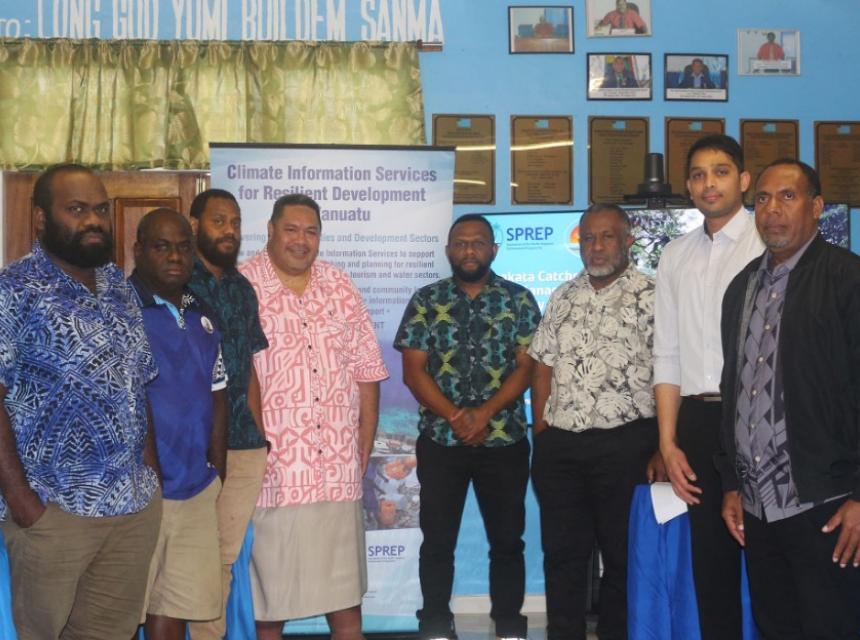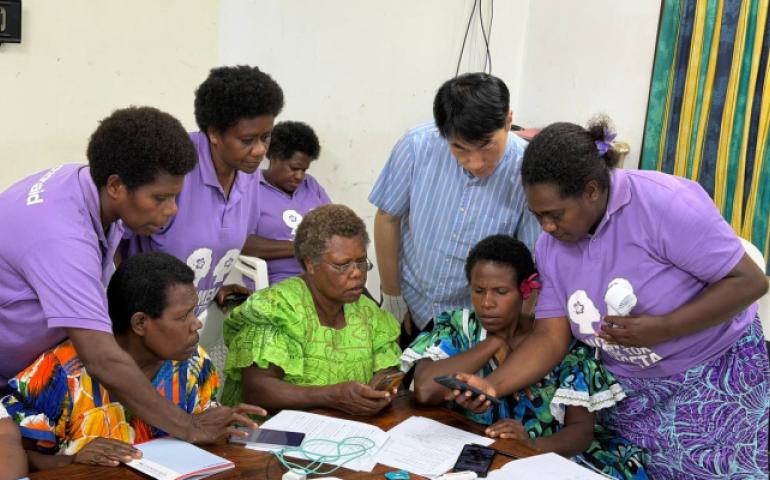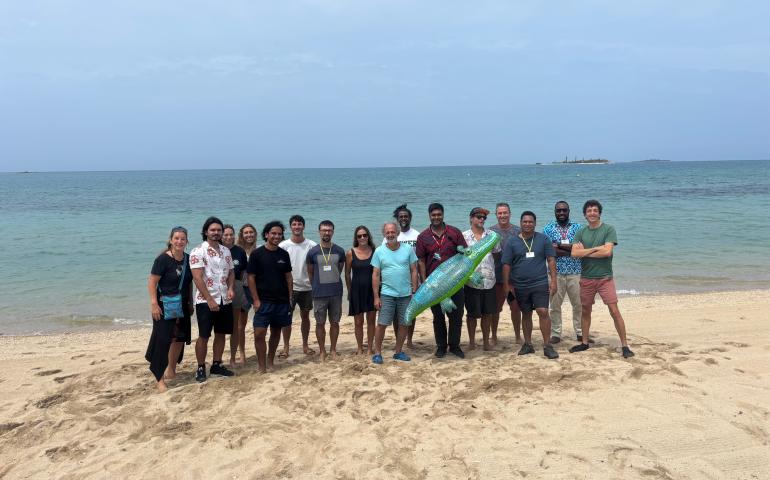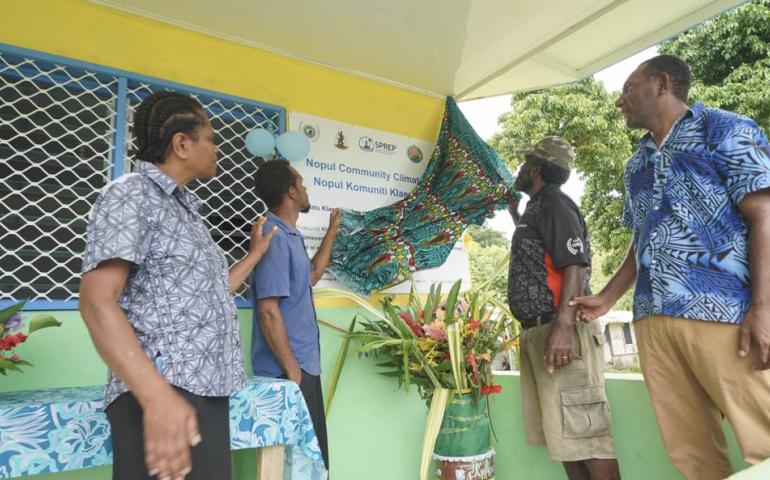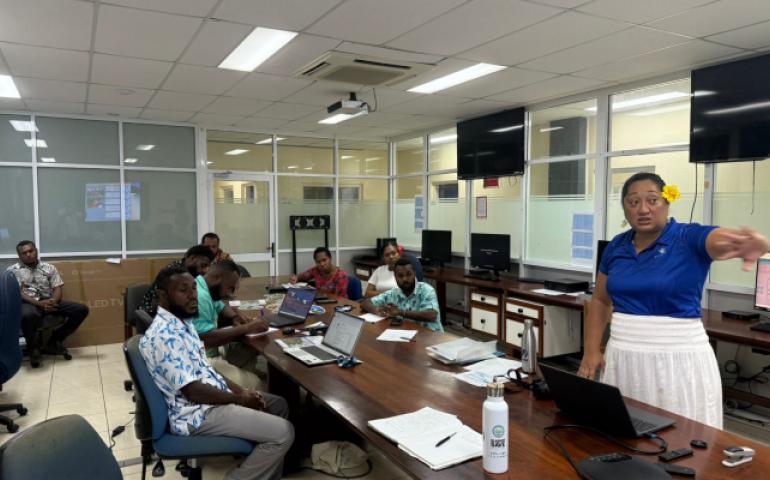Vanuatu Sarakata River Flood Management Plan to safeguard lives and livelihoods
Most of the time, the Sarakata River in Espiritu Santo is a serene and beautiful waterway. After heavy rainfall, however, it becomes a raging torrent, flooding adjacent populated areas. Although such floods are a natural phenomenon, human-induced climate change is making the rainfall events that cause this flooding more extreme. This is resulting in more severe flooding in the Sarakata River catchment and is leaving adjacent communities more vulnerable in terms of their physical safety, economic stability, and overall development.
To address this challenge, a comprehensive flood management plan and early warning system has been developed by the Vanuatu Klaemet Infomesen blong Redi, Adapt mo Protekt Project (VanKIRAP) to help communities close to the river like Solway, Pepsi, and Pump Station to prepare, plan for and respond to climate-related flood events.
A well-designed flood management plan serves as a road map for assessing and mitigating the risks associated with Sarakata River’s unpredictable flooding events. It also helps minimise the impacts of flooding by efficiently managing floodwaters, reducing property damage, safeguarding public health, and ensuring the continued functioning of critical infrastructure.
Late last month, following a previous consultation with Port Vila-based stakeholders in June, a workshop was held in Luganville to gather feedback from various Government agencies on the draft Sarakata Catchment Flood Management Plan. The Plan, developed for VanKIRAP by consultancy firm Tonkin & Taylor, details what early warning systems and standard operating procedures national, provincial, and local governments need to implement in order to protect communities within the Sarakata River catchment area.
The workshop covered a range of topics including flood risk management governance and planning; flood risk management measures; hydrological observation, monitoring, analysis, and forecasting; warning dissemination and communication; preparedness, and response capabilities. Discussions were also held on to determine flood response standard operating procedures, including a simulation exercise that involved all participants of the training.
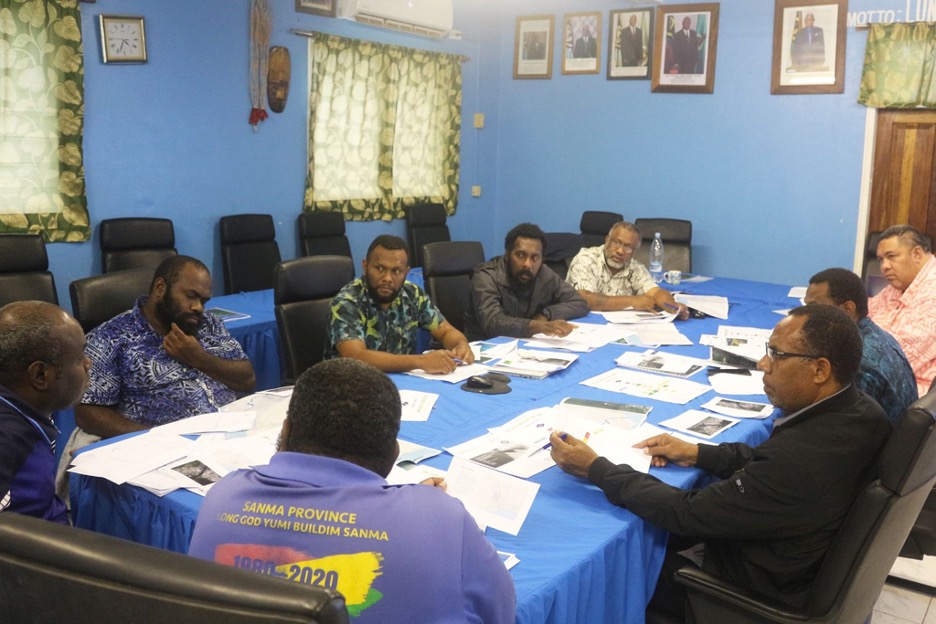
According to the workshop’s facilitator, Dr. Neeraj Shankar from Tonkin & Taylor, the main goal of the workshop was to present the flood management plan and early warning system for the Sarakata River catchment.
“We also conducted flood simulation exercises to evaluate how authorities would respond during flood events, and identified the key challenges they face when implementing key decisions”, Mr. Shankar says.
“The plan is of utmost importance as it is the first for the Sarakata River catchment, helping authorities establish procedures to reduce vulnerability and ensure the safety of communities during rainfall events or when water levels rise”, he says.
Standard operating procedures (SOPs) also play a key role in enhancing the efficiency and coordination among all stakeholders involved in flood management, including governmental agencies, local communities, NGOs. SOPs provide clear guidelines for response actions during flood emergencies, delineating roles, responsibilities, and steps to be undertaken by each party involved. This alignment ensures a well-coordinated response that reduces confusion, maximises the utilisation of available resources and facilitates effective communication channels.
The workshop was coordinated by VanKIRAP. VanKIRAP is managed by the Secretariat of the Pacific Regional Environment Programme (SPREP) in partnership with the Vanuatu Government, and funded by the Green Climate Fund (GCF).
For more information please contact Sunny Kamuta Seuseu, Acting Manager, VanKIRAP, [email protected]
